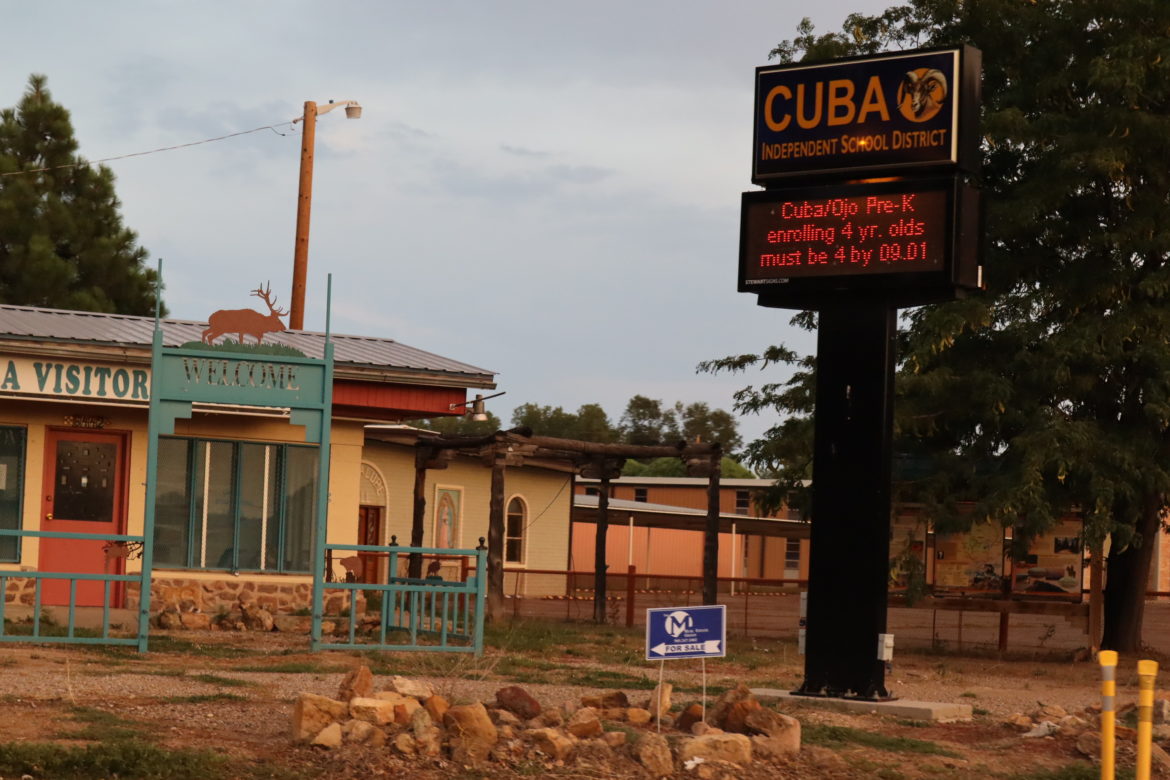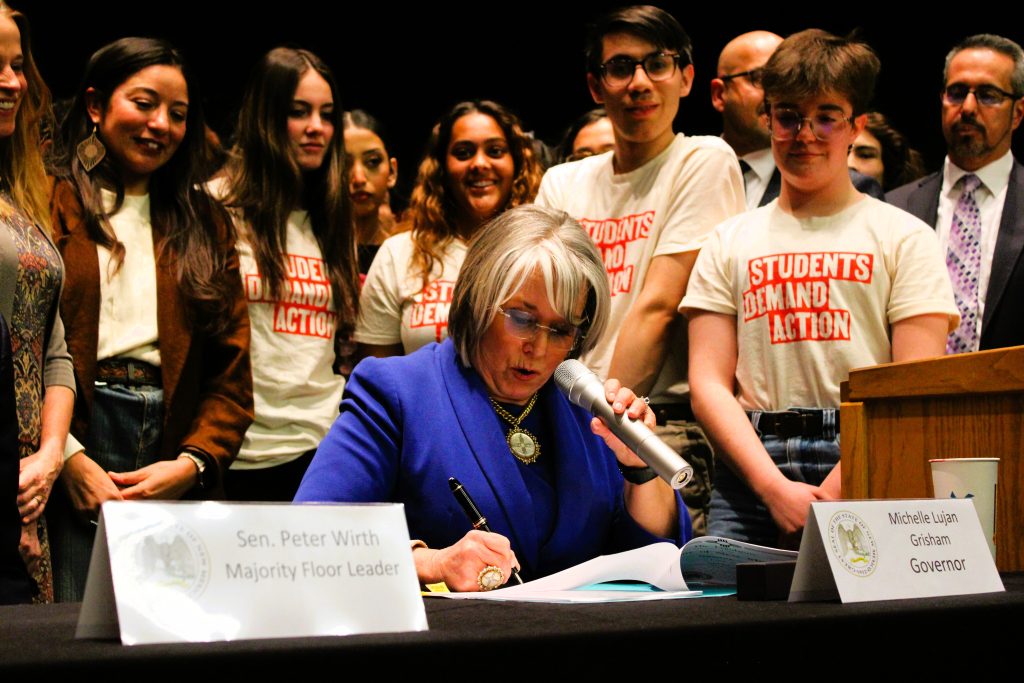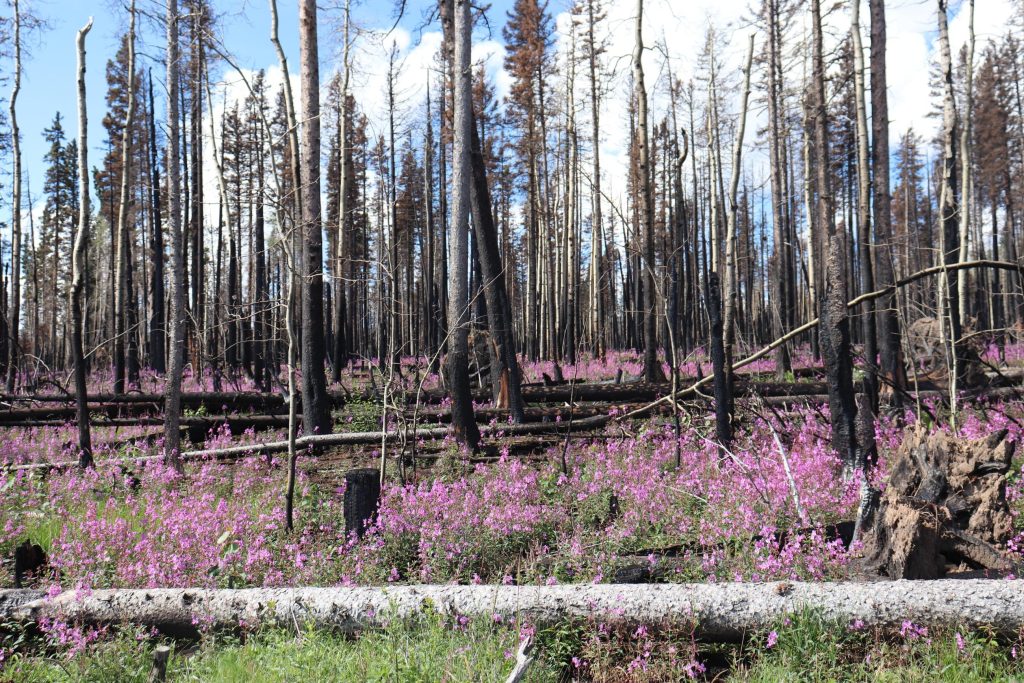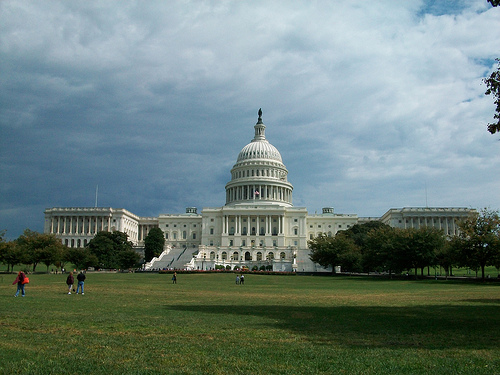Kelly Maestas starts each weekday the same way, cranking up a school bus parked at the Cuba Independent School District bus barn.
The sun has already risen over the San Pedro mountains in the Santa Fe National Forest. But on Friday morning a smoggy haze lingers over this rural redoubt of New Mexico thanks to the Medio fire just north of Santa Fe, the Pine Gulch Fire in Colorado or any of the 90 large fires in California.
A few years ago Maestas traded in a big rig for the school bus. Rather than bustling with students, however, it’s empty save for a few dozen bags of meals and school assignments for the kids on his route.
This story was originally published by New Mexico In Depth and is republished under a Creative Commons license.
Over several hours, Maestas will stop 65 times — each stop a home of a student or students who attend Cuba’s schools — racking up 112 miles.
These days Maestas and 10 other bus drivers are an integral component of the Cuba school district’s response to a global pandemic that mingles old-timey itinerant circuit-riding with 21st-century tech.
Every day, the 11 bus drivers put close to 900 miles on their vehicles delivering food and education kits to the district’s more than 500 students who have yet to return to the classroom and in many cases, can not access the internet from home.
Because so many Cuba students lack sufficient broadband or cellular service, the school district, which is larger than the state of Rhode Island, has distributed to every student special bracelets armed with a built-in USB-drive. Students use them to download lessons when they drive to an internet hotspot. Back home they can upload the lessons to their school district-supplied laptops while using materials from the education kits for non-internet based instruction.
The bracelets impressed Ryan Stewart, New Mexico’s public schools secretary, so much during his visit to Cuba last week that he said New Mexico’s other rural districts might think about using them, too. Most of the state’s 89 school districts serve rural communities.
“I’d seen them before but I haven’t seen any schools use them,” Stewart said during a short phone interview Friday. “That is absolutely something that could very well be an important piece that some of these other rural districts who have similar access challenges like Cuba might be able to learn from” and emulate if they work.
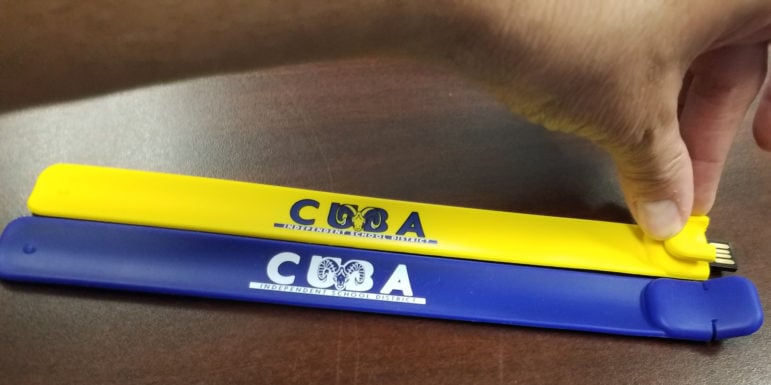
As helpful as 21st century tech is, however, the district’s bus drivers are the only in-person interaction many students get with the district since COVID-19 appeared in the state this spring. That could change after Labor Day, when Cuba may add some in-person learning to what has been until now a fully remote learning experience
In addition to delivering education kits with books and other materials, the daily bus runs ensure students receive daily school meals in a district where more than 40% of families are on food stamps and 60% live below the poverty level.
“The virus has impacted students on my route,” said Maestas, whose daily loop includes dirt roads that can turn muddy with precipitation, making the daily trek more harrowing.
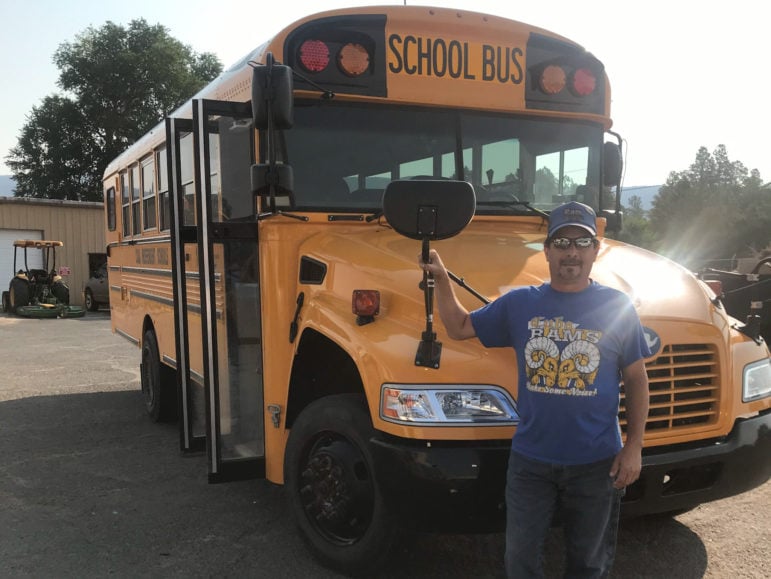
“Everyone is hurting right now,” he said. “Driving is just a whole new ballgame.”
Victoria Dominguez, service director for Cuba Cares, a program the district started at the beginning of the pandemic, said the drivers “really took the load of the entire school district and put it on their back.”
“They know exactly what these kiddos are going through, they know who the family is and who they are connected to,” she said.
The village of Cuba, which abuts the Nacimiento mountains in northwestern New Mexico, is small, but its namesake school district draws students from a large area. Most live in Sandoval County, but the district also serves children from Rio Arriba, San Juan and McKinley counties, including communities on the eastern half of the Navajo Nation.
That makes for a diverse student population, according to Cuba schools superintendent, Dr. Karen Sanchez-Griego, who said about 71% of the district’s students are Native American, mostly Diné (or Navajo), 26% Hispanic and 3% other.
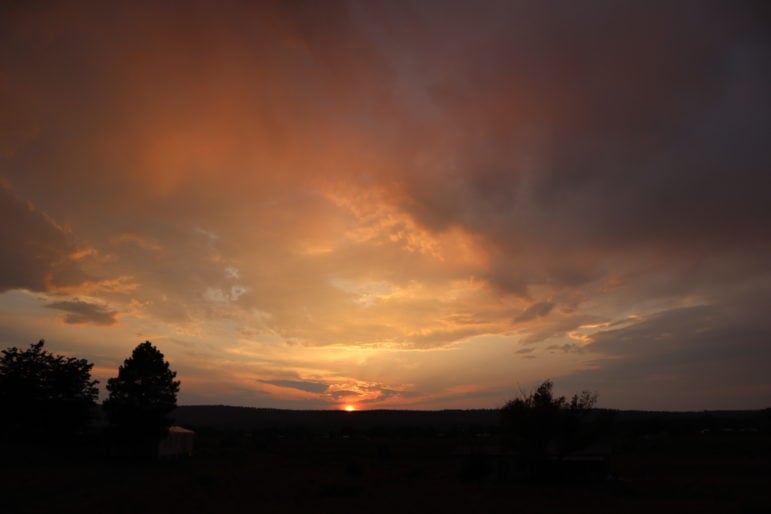
Many of the Navajo children are classified as English language learners. Despite that fact, the district over the years has struggled to lure certified teachers because it has to compete with other districts that pay more lucrative stipends, according to state court documents. Its schools have lacked library resources, too. And staff have not always understood the language and culture of many of their students.
Then there’s the need for the internet. New Mexico is one of a handful of states in which more than 25 percent of students lack internet access at home. But the digital divide is worse for the state’s tribal communities.
More than 40 percent “of people living on tribal lands lack access to broadband, with the deficit jumping to 68 percent for those living in rural areas,” according to a presentation given last week to a committee of the New Mexico Legislature. “The Digital Divide is now the Digital Chasm,” the presentation’s authors wrote, emphasizing the direness of the situation with bold letters.
It was the convergence of these perennial challenges that led Cuba, along with five other school districts and several parents, to successfully sue New Mexico, resulting in a landmark court ruling in 2018. New Mexico has since invested several hundred million dollars to lessen the inequities that disproportionately fall on Indigenous students, English language learners and students with special needs — the very groups that make up most of Cuba’s student population.
“One hundred percent of our kids have needs,” Sanchez-Griego said.

The new dollars have led to reforms and more access to technology, especially in rural districts like Cuba. But there are still major gaps as the COVID-19 pandemic is forcing students, their parents, teachers, school administrators and policy makers to adjust to a new world of learning.
Pulling together
When Cuba’s three schools reopen after months of remote learning, whether it’s immediately after Labor Day or later in the school year, students will likely find markers spread out at 6-feet intervals posted around each campus, as well as signs encouraging hand washing. School mascots will be modeling appropriate behavior, too, by wearing masks.
In the meantime, the school district is building upon lessons learned during its summer enrichment program, which provided a model for non-internet based education.
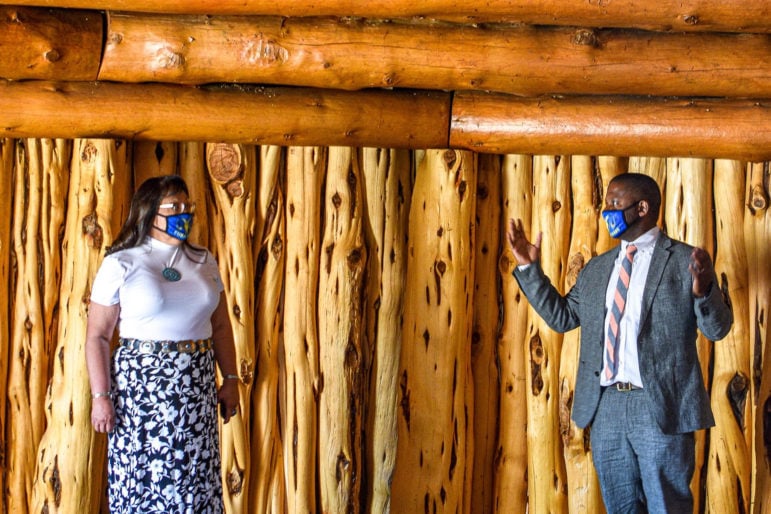
Using money from the state’s Indigenous Education Initiative, the school district created a culturally relevant education program for 85 students, mostly from Navajo communities.
Participating students from kindergarten through 12th grade received a box with several books and materials to weave a Navajo rug and grow a “Three Sisters” garden of corn, beans and squash. The four-week program focused on culturally relevant skills, that helped students develop hand-eye-coordination, everyday motor skills and increased attention spans.
“This summer program was a challenge from the start but eventually it got to the point where we had to go back to when we were younger and had no technology,” elementary teacher Chastity Gordo said. “Teaching students to go back to how living used to be back in the days when not everything was about technology, how our elders did their gardening and planting to provide food.”
The thinking behind such projects is steeped in culturally relevant education theory. By weaving a Navajo rug, the thinking goes, the students not only learn about their tribe’s culture and history, but also math — the rugs’ designs require a certain aptitude for geometry.
Those lessons will inform how the school district works remotely in the coming year, with the schools using project-based instruction boxes that incorporate multiple components–like math and reading–into specific lessons. Language will be included also.
The district plans to expand its Spanish and Dine language programs, despite the pandemic imposed difficulties, said Cuba High School Spanish teacher Carol Chavez, to ensure standards “are aligned with culture and language at the forefront.”
“Our kids are not fluent,” she said. “We’re kind of introducing the language to them, it’s learning a second language.”
And the essential workers, at least until the school opens in September, if they do, are bus drivers, delivering boxes and visiting students.
Drivers that spot serious issues, such as child abuse, are required to report back to the school which would then notify New Mexico Children Youth & Families Department. It’s unclear if they made any reports this summer.
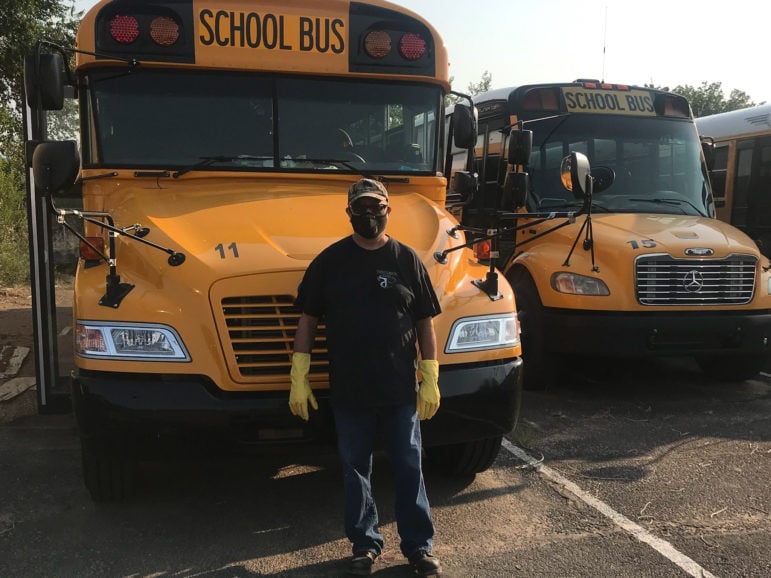
They also notify Cuba Cares if community members need clothes or food, and even update contact information for families that move. “They know the community inside and out,” Dominguez said of the district’s bus drivers. “Sometimes we don’t have the right information in the computer and numbers change, and they’ll be the ones to put the pieces together. They’re just a wealth of knowledge.”
Larry Sebada, whose daily bus route is 80 miles, seems to exemplify the behavior Dominguez described. He asks children he encounters on his daily route “‘do you miss your friends,’ “ he said.
“They miss their friends,” he said. “I’m always asking the kids, how are they doing, how is the home?”
This piece is part of a collaborative reporting project called Lesson Plans: Rural schools grapple with COVID. It includes the Institute for Nonprofit News, Charlottesville Tomorrow, El Paso Matters, Iowa Watch, The Nevada Independent, New Mexico in Depth, Underscore News/Pamplin Media Group and Wisconsin Watch/The Badger Project. The collaboration was made possible by a grant from the Walton Family Foundation.

